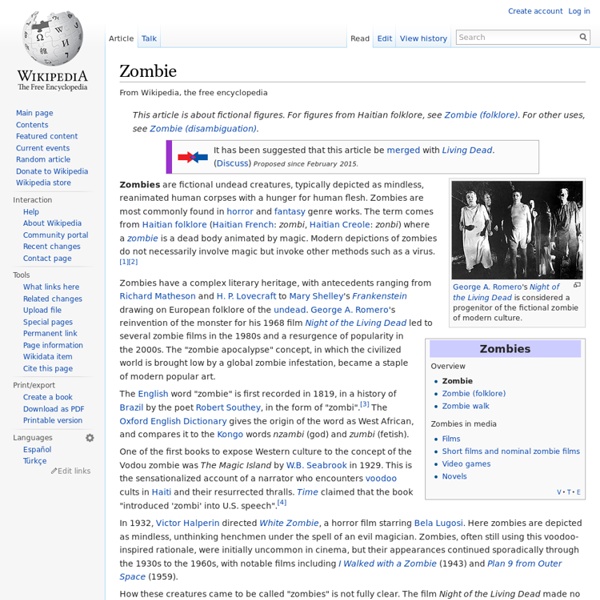Anchimayen
The Anchimayen (in the mapudungun language, also spelled "Anchimallén" or "Anchimalguén" in Spanish) is a mythical creature in Mapuche mythology. Anchimayens are described as little creatures that take the form of small children, and can transform into fireball flying spheres that emit bright light. They are the servants of a kalku (a type of Mapuche sorcerer), and are created using the corpses of children. Anchimayens are sometimes confused with Kueyen (the Mapuche lunar goddess), because she also produces a bright light.
Jewish mythology
Jewish mythology is the sacred and traditional narratives that help explain and symbolize Judaism. Elements of Jewish mythology have had a profound influence on Christian and Islamic mythology, as well as world culture in general. Christian mythology directly inherited many of the narratives from the Jewish people, sharing in common the narratives from the Old Testament. Islamic mythology also shares many of the same stories; for instance, a creation account spaced out over six periods, the legend of Abraham, the stories of Moses and the Israelites, and many more. Tanakh[edit] Jewish mythology contains similarities to the myths of other Middle Eastern cultures.
Death in Norse paganism
The soul[edit] Funeral[edit] The grave goods had to be subjected to the same treatment as the body, if it was to accompany the dead person to the afterlife.
Mapuche religion
The mythology and religion of the indigenous Mapuche people of south-central Chile and southwestern Argentina is an extensive and ancient belief system. A series of unique legends and myths are common to the various groups that make up the Mapuche people. These myths tell of the creation of the world and the various deities and spirits that reside in it. Description[edit]
Norse funeral
Norse funerals, or the burial customs of Viking Age North Germanic Norsemen (early medieval Scandinavians), are known both from archaeology and from historical accounts such as the Icelandic sagas, Old Norse poetry, and notably from the account of Ahmad ibn Fadlan. Throughout Scandinavia, there are many remaining tumuli in honour of Viking kings and chieftains, in addition to runestones and other memorials. Some of the most notable of them are at the Borre mound cemetery, in Norway, at Birka in Sweden and Lindholm Høje and Jelling in Denmark. A prominent tradition is that of the ship burial, where the deceased was laid in a boat, or a stone ship, and given grave offerings in accordance with his earthly status and profession, sometimes including sacrificed slaves. Afterwards, piles of stone and soil were usually laid on top of the remains in order to create a tumulus. Grave goods[edit]
Skin-walker
In some Native American legends, a skin-walker is a person with the supernatural ability to turn into any animal he or she desires. To be able to transform, legend sometimes requires that the skin-walker wears a pelt of the animal, though this is not always considered necessary. Similar lore can be found in cultures throughout the world and is often referred to as shapeshifting by anthropologists.
Basilisk
Accounts[edit] The basilisk is called "king" because it is reputed to have on its head a mitre- or crown-shaped crest. Stories of the basilisk show that it is not completely distinguished from the cockatrice.
Klabautermann
A Klabautermann on a ship, from Buch Zur See, 1885. A Klabautermann is a water kobold (or nix) who assists sailors and fishermen on the Baltic and North Sea in their duties. He is a merry and diligent creature, with an expert understanding of most watercraft, and an unsupressable musical talent.
Jinn
Imam Ali Conquers Jinn Unknown artist Ahsan-ol-Kobar 1568 Golestan Palace. Together, the jinn, humans and angels make up the three sapient creations of God. Like human beings, the jinn can be good, evil, or neutrally benevolent and hence have free will like humans and unlike angels.[3] Etymology and definitions[edit] Jinn is a noun of the collective number in Arabic literally meaning "hidden from sight", and it derives from the Arabic root j-n-n (pronounced: jann/ junn جَنّ / جُنّ) meaning "to hide" or "be hidden".
Gargoyle
Gargoyles of Notre-Dame de Paris Etymology[edit] The term originates from the French gargouille, which in English is likely to mean "throat" or is otherwise known as the "gullet";[2] cf. Latin gurgulio, gula, gargula ("gullet" or "throat") and similar words derived from the root gar, "to swallow", which represented the gurgling sound of water (e.g., Portuguese garganta, "throat"; gárgola, "gargoyle"). It is also connected to the French verb gargariser, which means "to gargle



